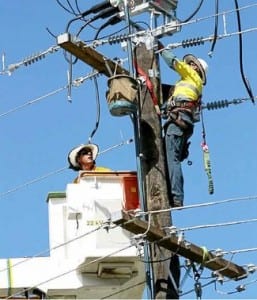Queensland network operator Ergon Energy is considering a scheme where it would “buy back” the high feed-in-tariffs that are locked in until 2028, so that it can avoid costly network upgrades.
The proposal was revealed by Ergon Energy CEO Ian McLeod during a panel session at the Brisbane Global Café, an event held in the lead up to the G20 talks this weekend.
McLeod said the structure of the 44c/kWh net feed in tariff meant that 80,000 households on that tariff within his network were more likely to use little electricity in their homes during the day, and switch on their appliances at night. That way, they could maximise their revenue from the tariff.
 But this was causing major problems at some points in the network. In some instances, such as around Hervey Bay, one of the areas with the highest solar penetration, Ergon Energy was facing a $30 million bill to upgrade sub-stations and lines to deal with the rising peak demand.
But this was causing major problems at some points in the network. In some instances, such as around Hervey Bay, one of the areas with the highest solar penetration, Ergon Energy was facing a $30 million bill to upgrade sub-stations and lines to deal with the rising peak demand.
Hence the idea that rather than upgrade the grid, it could be cheaper to “buy out” the feed in tariff from the households with an upfront payment, and put them on the 6.5c/kWh net tariff.
Ergon Energy’s own research showed that homes on those tariffs were more likely to use appliances such as pool pumps during daylight hour because they were getting a net benefit of consuming the power from the solar panels, rather than exporting it, and offsetting the cost of grid-based power. This would help lower the peaks in the early evening.
Ergon Energy, which covers 97 per cent of Queensland by land area, faces a $1.6 billion from the 44c/kWh feed in tariff out to 2028, with more than 1-in-ten of its residential customers on that 44c/kWh tariff.
It has not yet crunched the numbers on what sort of payment it would offer, but some factors it would have to consider include a discount for the time value of the money, and the potential of some homeowners to move house anyway – an act that normally causes an automatic switch to the lower tariff.
McLeod says Ergon Energy is also mulling whether to may make an offer to all households on the 44c/kWh tariff, or it may restrict that offer to parts of the network with serious congestion problems. It is talking to some third party companies to consider a model for the buyback.
Ergon Energy has been active in battery storage installations, announcing recently that it would begin the first of what could be hundreds of 100kWh battery storage systems around its network, to avoid the cost of grid upgrades and to help with integration of renewables such as solar.
McLeod says the company is also in discussions with builders of sub-divisions to possibly install battery storage as a matter of course for households, and to put in less solar.
Currently, many new houses were coming with 5kW rooftop solar systems – but this more than many of the homes could use, and would mean that Ergon Energy would have to install a network to match the solar output rather than the energy consumption, at much greater cost.






